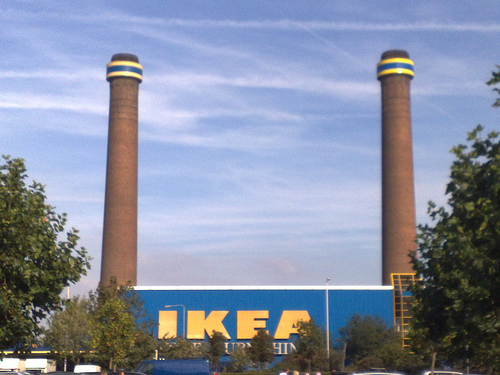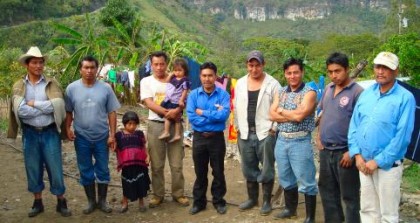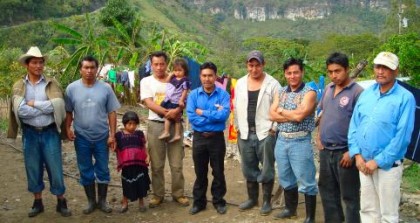 Maya Vinic Co-op in Chiapas, Mexico. Photo: Courtesy of Peace CoffeeCompared to so many other purchasing decisions — like which humane meat label to trust, for instance — the “Certified Fair Trade” logo has made buying ethically produced coffee a relatively simple choice. Most of us either buy fair trade or we don’t.
Maya Vinic Co-op in Chiapas, Mexico. Photo: Courtesy of Peace CoffeeCompared to so many other purchasing decisions — like which humane meat label to trust, for instance — the “Certified Fair Trade” logo has made buying ethically produced coffee a relatively simple choice. Most of us either buy fair trade or we don’t.
But that’s all about to change. As The New York Times reported earlier this month, Fair Trade USA (FTUSA) is breaking away from Fair Trade International, its global parent, and creating new, less stringent standards. For American coffee drinkers, this will soon mean two fair trade labels — one that will stick with the movement’s original intention to work only with small coffee-growing cooperatives, and FTUSA’s new label, which will most likely include coffee grown on larger, plantation-sized farms, and products with as little as 10 percent fair trade ingredients. (See the draft of the new standards.)
This split over the definition of fair trade doesn’t only risk confusing conscientious U.S. coffee buyers. It also exposes a rift at the heart of this movement over the best strategy for making coffee farming a more sustainable and humane enterprise.
Paul Rice, the chief executive of FTUSA, is positioning the shift as a question of growth and accessibility for the movement. In the Times article above he asks: “Do we want it to be small and pure or do we want it to be fair trade for all?”
Clearly, Rice’s organization has hired a good brand strategist. When Rice says “fair trade for all” he means two things. Including larger operations will undoubtedly make much more fair trade coffee available to many more businesses. (Green Mountain Coffee Co. has already signed on to working with the new label, and Starbucks, Walmart, and Whole Foods are probably not far behind.) In other words, these proposed changes will allow fair trade to grow even faster than it already has in recent years. The National Coffee Association (NCA) reports that consumer awareness of fair trade has grown by an average of 33 percent every year since 2003. By 2012, the U.S. retail value of fair trade products is projected to exceed $2.25 billion — and more large plantations mean more income for FTUSA, whose certifying fees are based on poundage.
The Fair Trade for All plan also promises to benefit more workers. But what that will really mean is up for debate. Many in the fair trade world are concerned about the dilution of what they see as a credible brand based on truly democratic power to workers.
Reporting on an early, candid discussion with Rice about the new standards, Michael Sheridan of Catholic Relief Services’ Coffee Lands Blog wrote:
Fair Trade for All aims to generate social and economic benefits for groups that have been marginalized by current Fair Trade coffee standards, namely estate workers and unorganized smallholders.
In their draft standards FTUSA defines worker empowerment as: “Workers are able to represent themselves effectively in their negotiations with management for improved working conditions.”
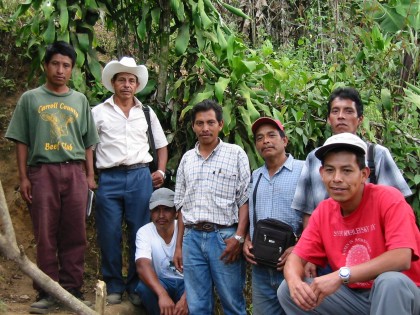 Members of the Asociación de Pequenos Caficultores Organicos Maya-Mames, a co-op in Guatamala.Photo: Courtesy of Peace CoffeeWhere “worker empowerment” is a vague term, however, fair trade veterans like Jim Kleinschmit of the Institute of Agriculture and Trade Policy (IATP) — the organization that founded Transfair USA, before it became Fair Trade USA — point out that the word “cooperative” is far from vague. IATP has issued a statement about FTUSA’s recent moves, stating they fear that the new approach has the potential to dilute or undermine the fair trade movement, precisely because it threatens to abandon established coffee co-ops — and with them their core principles of transparency and democracy.
Members of the Asociación de Pequenos Caficultores Organicos Maya-Mames, a co-op in Guatamala.Photo: Courtesy of Peace CoffeeWhere “worker empowerment” is a vague term, however, fair trade veterans like Jim Kleinschmit of the Institute of Agriculture and Trade Policy (IATP) — the organization that founded Transfair USA, before it became Fair Trade USA — point out that the word “cooperative” is far from vague. IATP has issued a statement about FTUSA’s recent moves, stating they fear that the new approach has the potential to dilute or undermine the fair trade movement, precisely because it threatens to abandon established coffee co-ops — and with them their core principles of transparency and democracy.
“We’re not in any way disputing the need to spread these benefits to farmworkers on plantations,” Kleinschmit told me recently. But he believes there should be a way to do that outside of the Fair Trade moniker. One key distinction is this: While co-ops are democratically run and built with year-round community development in mind, coffee plantations are seasonal operations that employ people for the brief harvest and are therefore much less likely to foster a stable community equipped with things like schools and reliable health care.
“It’s not as clear how that benefit would be passed on in a seasonal, migratory labor situation,” he says.
FTUSA’s Rice is a fair trade veteran who helped form an early coffee farming co-op in Nicaragua called PRODECOOP, and he clearly hopes to see the market for fair trade grow in such a way that doesn’t pit the two labels against one another.
“I am not going to be the guy who abandoned co-ops. I can’t do that given everything I’ve done,” he told Sheridan.
On the other hand, it’s clear that the co-op model, which often requires consensus and democratic decision-making, is too messy for the well-oiled plantation-based system that Rice is moving toward. As Sheridan wrote on the Coffee Lands Blog:
Paul believes that by easing the requirements for participation on the grower end of the [fair trade coffee] chain, the system will achieve the kinds of efficiencies necessary for bigger players in the market to make bigger commitments to [fair trade coffee] sourcing.
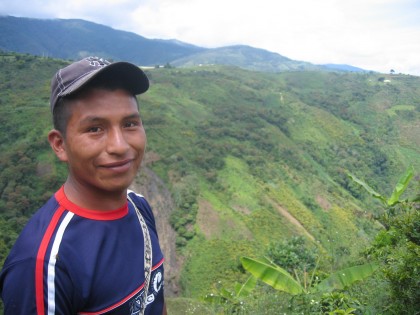 Farmer from the Fondo Paez co-op in Colombia.Photo: Courtesy of Peace CoffeeIronically, one of the more outspoken among Rice’s critics is a woman named Merling Preza, the general manager of PRODECOOP (she also spoke with Sheridan for the Coffee Lands Blog). As Preza sees it, until now, the co-op ethic has shaped the entire fair trade movement — right down to the leadership of Fair Trade International (the decision-making body that governs fair trade internationally and represents 322 co-ops worldwide). Half, or 12, of the 24 members of FTI’s governing body are farmers. “With Fair Trade USA, we participate in advisory committees but not in decision-making,” she told Sheridan. “Fair Trade USA does not want representation of farmer networks on its board. Why not? Because it means empowerment.”
Farmer from the Fondo Paez co-op in Colombia.Photo: Courtesy of Peace CoffeeIronically, one of the more outspoken among Rice’s critics is a woman named Merling Preza, the general manager of PRODECOOP (she also spoke with Sheridan for the Coffee Lands Blog). As Preza sees it, until now, the co-op ethic has shaped the entire fair trade movement — right down to the leadership of Fair Trade International (the decision-making body that governs fair trade internationally and represents 322 co-ops worldwide). Half, or 12, of the 24 members of FTI’s governing body are farmers. “With Fair Trade USA, we participate in advisory committees but not in decision-making,” she told Sheridan. “Fair Trade USA does not want representation of farmer networks on its board. Why not? Because it means empowerment.”
The schism in fair trade land ultimately echoes many recent conversations in the organic movement and elsewhere. Less-stringent standards are nearly always promoted as a way to engage corporate interest and grow a movement.
But, as we’ve seen throughout the food chain, once you consolidate within an industry, it’s very difficult to move backward. No one is sure that the coffee co-ops (which have thrived by taking a collective approach at odds with Western individualism) will go away. But it’s also likely that FTUSA’s new standards will cause a slow, quiet erosion of their market share.
As Sheridan put it:
[Merling Preza] fears that once FT4All is out of the gate, it will be hard to turn back, and even harder to help cooperatives cope with the fallout.
“If Fair Trade for All affects our cooperatives, who will compensate us?” she asks. “If we lose market opportunities? If our cooperatives weaken or dissolve?”
Here in the U.S., Jim Kleinschmit worries coffee drinkers will be caught in the middle of a confusing set of messages. “At the end of the day consumers are the ones who determine the success of any labels,” he says.
While FTUSA appears committed to their new standards, they have put the draft on their website in Spanish, Portuguese, and English, and they’re still officially taking comments from stakeholders until Dec. 30. Which is why IATP didn’t mince words in its latest release about the importance of FTUSA’s impending choice.
“For the sake of the entire fair trade movement,” the statement reads, “we encourage Fair Trade USA to reconsider its decision.”
